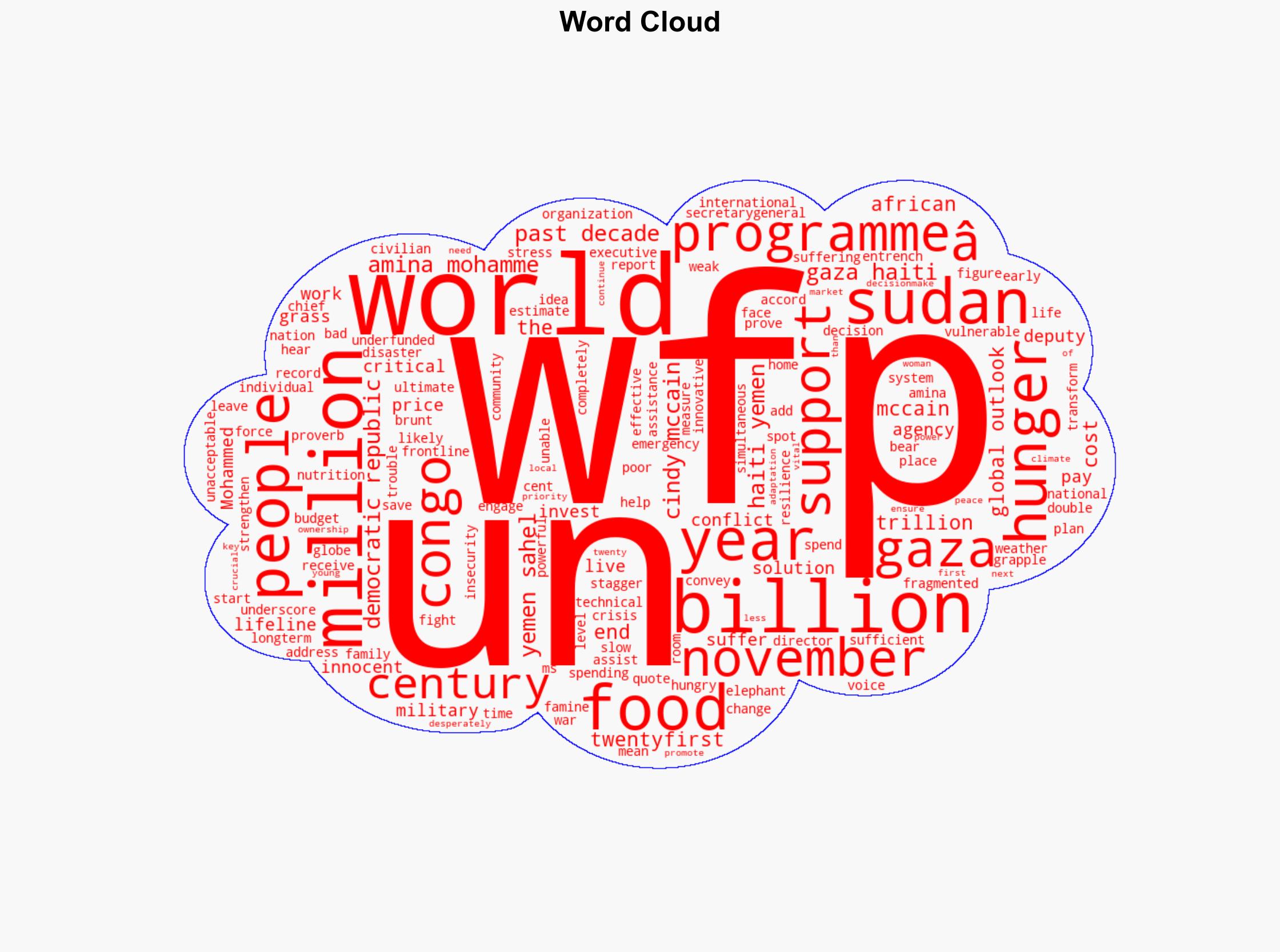Ending world hunger costs less than 1 of military spending – Globalsecurity.org
Published on: 2025-11-19
AI-powered OSINT brief from verified open sources. Automated NLP signal extraction with human verification. See our Methodology and Why WorldWideWatchers.
Intelligence Report: Strategic Analysis on the Cost of Ending World Hunger vs. Military Spending
1. BLUF (Bottom Line Up Front)
With a moderate confidence level, the most supported hypothesis is that reallocating a fraction of global military spending to address world hunger is feasible and could significantly reduce food insecurity. However, political, economic, and logistical challenges must be addressed to ensure effective implementation. Recommended actions include advocating for international policy shifts, enhancing transparency in funding allocation, and fostering multi-sector collaborations.
2. Competing Hypotheses
Hypothesis 1: Reallocating less than 1% of global military spending could effectively end world hunger by funding comprehensive food security programs.
Hypothesis 2: Despite the potential financial feasibility, political, logistical, and systemic barriers will prevent effective reallocation of military spending to end world hunger.
Hypothesis 1 is more supported due to the financial data presented, indicating that the cost of ending hunger ($93 billion annually) is a small fraction of the $21.9 trillion spent on military budgets over the past decade. However, Hypothesis 2 remains plausible due to historical precedence of political inertia and complex geopolitical interests.
3. Key Assumptions and Red Flags
Assumptions:
– The financial estimates provided by the UN World Food Programme are accurate and comprehensive.
– Governments are willing to reallocate military budgets without compromising national security.
Red Flags:
– Potential underestimation of logistical challenges in reallocating funds.
– Political resistance from countries with significant military-industrial interests.
4. Implications and Strategic Risks
Implications: Successful reallocation could lead to significant reductions in global hunger, improving stability in vulnerable regions.
Strategic Risks:
– Political backlash from defense sectors.
– Potential misuse or misallocation of funds due to corruption or lack of oversight.
– Escalation of geopolitical tensions if perceived as compromising national defense.
5. Recommendations and Outlook
- Actionable Steps: Advocate for international policy frameworks to facilitate fund reallocation, enhance transparency in funding processes, and promote public-private partnerships to support food security initiatives.
- Best Scenario: Global consensus leads to effective reallocation, significantly reducing hunger and fostering stability.
- Worst Scenario: Political resistance and logistical failures prevent meaningful progress, exacerbating food insecurity.
- Most-likely Scenario: Partial reallocation occurs with mixed results due to varying levels of commitment and implementation challenges.
6. Key Individuals and Entities
Amina Mohammed (UN Deputy Secretary-General), Cindy McCain (WFP Executive Director), UN World Food Programme (WFP)
7. Thematic Tags
Regional Focus, Global, Food Security, Military Spending, International Policy
Structured Analytic Techniques Applied
- Causal Layered Analysis (CLA): Analyze events across surface happenings, systems, worldviews, and myths.
- Cross-Impact Simulation: Model ripple effects across neighboring states, conflicts, or economic dependencies.
- Scenario Generation: Explore divergent futures under varying assumptions to identify plausible paths.
Explore more:
Regional Focus Briefs ·
Daily Summary ·
Support us





